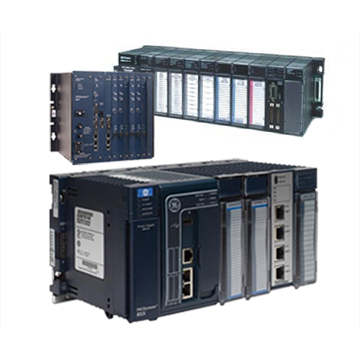Unlock the Secrets: The Ultimate Guide to Choosing the Perfect Control System Parts for Your Industrial Needs!
In the ever-evolving world of industrial applications, the efficiency and safety of operations hinge significantly on the control system parts employed. These components act as the brain behind machinery, ensuring that processes run smoothly and effectively. Whether you're overseeing a manufacturing plant, a chemical processing facility, or any other industrial environment, understanding how to choose the right control system parts is paramount. This guide aims to illuminate the various factors that come into play when selecting these critical components, helping you make informed decisions that align with your operational needs.

By the end of this article, you will not only grasp the fundamentals of control systems but also find yourself equipped with the knowledge necessary to compare and select the best parts for your specific applications.
Understanding Control Systems
Control systems are integral to modern industrial operations, functioning as the backbone that governs automated processes. At their core, control systems are designed to manage, command, direct, or regulate the behavior of other devices or systems. They can be broadly categorized into two types: open-loop and closed-loop systems. Open-loop systems operate without feedback, executing commands based solely on input signals, while closed-loop systems utilize feedback to adjust their operations in real-time, enhancing accuracy and performance.
For instance, in a manufacturing setting, a closed-loop control system can monitor output and adjust input variables to maintain product quality. Understanding these fundamental types of control systems is essential, as it informs the selection of parts that align with the desired operational outcomes, whether you're optimizing for speed, accuracy, or efficiency.
Key Components of Control Systems
Every control system comprises several critical components, each serving a unique function that contributes to the overall efficacy of the system. The primary parts include sensors, actuators, controllers, and user interfaces. Sensors are responsible for gathering data about the environment or process, such as temperature, pressure, or flow rate. This data is then transmitted to the controller, which processes the information and makes decisions based on predefined algorithms.
Actuators, on the other hand, take the signals from the controller to perform specific actions, such as opening a valve or adjusting a motor's speed. Meanwhile, user interfaces allow operators to monitor and interact with the control system, providing a crucial link between human decision-making and automated processes. Understanding these components and their functions is vital when evaluating control system parts, as each component's quality and specifications will directly impact system performance.
Factors to Consider When Choosing Control System Parts
Selecting the right control system parts is not merely a matter of preference; it requires careful consideration of several essential factors. Compatibility is the first and foremost aspect to evaluate. Ensuring that all components can effectively communicate and work together is crucial for seamless operation. Additionally, performance specifications such as response time, accuracy, and durability should align with the specific demands of your application.
Environmental conditions also play a significant role in component selection. Parts that operate in extreme temperatures, humidity, or exposure to corrosive substances must be chosen based on their ability to withstand such conditions. Lastly, budget constraints cannot be overlooked. While it may be tempting to opt for the cheapest options, investing in high-quality parts often results in lower maintenance costs and improved reliability over time. Balancing these factors is key to making an informed purchase that meets both operational needs and financial considerations.
Comparing Control System Parts
When it comes to purchasing control system parts, effective comparison is essential to ensuring that you are choosing the best options available. Start by identifying the features and technical specifications that are most important for your application. For instance, if precision is critical, look for components that offer high accuracy and fast response times.
Additionally, it can be beneficial to consider the use cases of different parts. Speaking to colleagues or industry friends can provide insights based on real-world experiences, helping you to understand which components perform well under specific conditions. Creating a comparison chart can also be an effective way to visualize differences and make informed decisions. By meticulously analyzing each part's features, specifications, and user feedback, you can confidently choose components that will enhance your control system's performance.
Common Mistakes to Avoid
Common mistakes when selecting control system parts include neglecting to conduct thorough research, comparing several options, and getting overwhelmed by a plethora of choices. Failing to consider features and specifications can lead to costly consequences.
Another frequent error is overlooking the importance of compatibility among components. Even high-quality parts can underperform if they are not designed to work together. Lastly, many individuals focus solely on price without considering long-term value. Choosing cheaper options may save money upfront but can result in increased maintenance and replacement costs down the line. By being aware of these mistakes, you can navigate the purchasing process more effectively and ensure that you select the best control system parts for your needs.
Making Informed Choices for Optimal Performance
Choosing the right control system parts is a critical decision that can significantly impact the efficiency and safety of industrial operations. By understanding the fundamentals of control systems, key components, and essential factors for selection, you can make well-informed choices that align with your specific needs. Remember to compare parts thoroughly, avoid common mistakes, and always prioritize compatibility and performance over mere cost. With the right knowledge and approach, you can unlock the full potential of your industrial applications and ensure long-term success.






commentaires